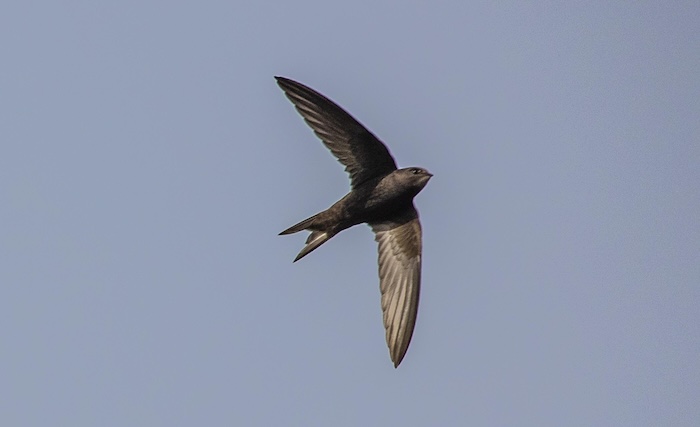
Signs of summer in the skies
Rachel Shaw
Lincolnshire Wildlife Trust
One overcast lunchtime, I was sitting in the garden and heard the characteristic scream of swifts.
It took a while to locate them in the sky but there they were, sweeping through the sky. Their screaming call is my favourite natural sounds but it’s one that I hadn’t heard for the previous nine months.
There were five of them, all high in the sky, dark sickle-shaped birds scything through the clouds. It felt like it might drizzle but the sight and sound of summer had returned. They are here to nest and it’s one of the few times when they do actually land.
Swifts are true birds of the skies. They spend virtually all their time on the wing: eating, sleeping, preening and mating in the air. In few weeks’ time the first birds will be landing. Watch for them flying headfirst towards buildings and disappearing into crevices or under tiles as they take food to their chicks.
It’s easy to think of the swifts that fly above our roofs as our swifts. But they spend very little time here; arriving in May and returning to Africa in August. They will spend most rest of the year in southern Africa, in the Democratic Republic of Congo and Tanzania, and as far south to Zimbabwe and Mozambique.
Even when they are here, they may be travelling huge distances foraging for food for their young. A swift can fly an amazing 560 miles per day during the nesting season. Then in the late evening, they’ll gather in groups careering excitedly around the rooftops, screaming as they twist and turn.
If you have them nesting in your house or nearby, treasure them and enjoy them. It won’t be long before they are gone again. And when they come back, their nesting sites may be gone. It is thought that the renovation of old buildings and the creation of new ones with no access or space for nests are among the reasons for a decline of more than 70% in swift numbers over the last forty years. Suitable nesting places can be incorporated into buildings whether they are completely new builds or during renovations, nest holes can be kept open. We can all help in our gardens by not using chemicals to support a healthy insect population.
Swifts aren’t the only graceful fliers in our skies at the moment. Swallows and martins have also returned and can be confused. If you’re not sure what you’ve seen, look closely at the shape and habits of the birds.
Swifts are dark brown all over and never perch on wires. Swallows are white underneath, with a glossy dark blue back and wings and red face and chin, their tail is deeply forked with long streamers. They are most often seen around farms, villages and open countryside and gather together perched on wires before migrating.
House martins are smaller, blue-black back and head cap, white rump and white underneath. They build their nests under the eaves of houses. Sand martins are paler brown, white underneath with a brown band under the chin. They nest in sandy banks and are most often seen near water. In early May, swallows, house martins and sand martins were all feeding over the West Common in large mixed flocks.
Pictured from the top of page are a house martin, sand martin and swift.


